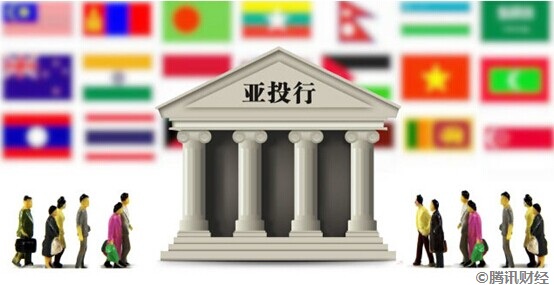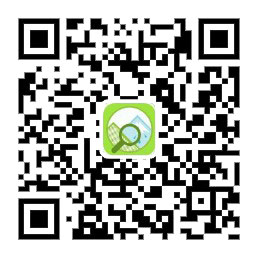 Intro
Intro
The 5th Chief Negotiators' Meeting on establishing the Asian Infrastructure Investment Bank (AIIB) concluded on March 22 in Singapore. Negotiators from the 57 prospective founding members have reached agreement on the bank's charter, with the signing scheduled for the end of June in Beijing. The framework of environmental and social safeguards is discussed in the meeting. There is preliminary decision to allocate capital contributions of AIIB according to the proportion of GDP in the region. AIIB will feature a three-level management structure that includes a board of governors, board of directors and senior management with effective supervision mechanism to guarantee efficiency and transparency. Also, AIIB has showed positive attitude towards learning and adopting global experience. At the same time, the reform documents of three policy banks in China have been released. China Development Bank (CDB) affirms its position as a development financial institution and it has become the world's largest development financial institutions. CDB will have significant contribution in the ‘One Belt One Road’ strategy. Thus development financial institutions play a vital role in the process of sustainable development. In this issue we present the responsibility of development finance in terms of environmental and social safeguard and provide the accountability mechanism of World Bank and Asia Development Bank as example.
 Alert
Alert
- Founding members agree on AIIB's charter
- AIIB complementary to ADB, World Bank: China's Finance Minister
- AIIB favors responsible investment projects such as green economy, low carbon economy (CH)
- Civil society call for China-led development bank to foster green growth
- Japan's US$100bn Asian Infrastructure Plan meant to counter AIIB
- Policy banks start major reform effort
 Resources
Resources
- Report: The World Bank Inspection Panel, SOMO
- Report: The Asian Development Bank,SOMO
- Report:Going out but going green? Assessing the implementation of China’s Green Credit Guidelines overseas,Friends of the Earth. (CH)
- Report:China Development Bank 2014 Annual Report(CH)
 View
View
Best-practice governance arrangements for the AIIB should involve articulating the roles and objectives of the AIIB, preparing clear operating principles and guidelines to achieve these objectives, outlining the roles and responsibilities of management and staff, and having robust review and accountability mechanisms.
Mike Callaghan Former Program Director of the G20 Studies Centre and a Nonresident Fellow at the Lowy Institute
Case 1 About the Asian Development Bank’s Accountability Mechanism
The Asian Development Bank (ADB) is a multilateral development bank that aims to alleviate poverty in the Asia and Pacific region. The ADB primarily supports public sector projects through loans, grants and technical assistance in the following core areas: infrastructure, environment, regional cooperation and integration, finance sector evelopment and education. The ADB also provides equity investments and loans to private companies operating in its member countries. In some cases the ADB also provides investments and loans to banks and other financial institutions, joint ventures between companies and government agencies (public-private partnerships) or state-owned enterprises.
The ADB’s current Accountability Mechanism (AM) Policy came into effect on 24 May 2012, replacing the previous 2003 Accountability Mechanism Policy. The AM is comprised of two separate offices: the Office of the Special Project Facilitator (SPF) for Problem- Solving and the Office of the Compliance Review Panel (CRP) for the Compliance Review.
The ADB accountability mechanism process
Registration of the complaint
When the CRO receives a complaint, he or she acknowledges receipt and informs the SPF and the CRP, and the relevant ADB Department. The complainant has 21 days to decide which function to request.
Problem-Solving Function
If the SPF determines the complaint is eligible, it conducts an assessment, which could include one or more site visits and meetings with you and other relevant parties. Based on the assessment and comments received from the parties, the SPF will decide whether to proceed with problem-solving. Generally, the objective of the Problem-Solving Function is to bring the parties together and come to an agreement about how to address the problem without determining whether a breach has occurred. Once a problem-solving process has begun, either party can withdraw at any time, and you can request a compliance review. At the end of the process, the SPF will issue a public report that includes a summary of the complaint, steps taken to resolve the issues and any decisions made by the parties. The SPF will monitor the implementation of any agreement reached.
Compliance Review Function
If the Office of the CRP that oversees the Compliance Review Function determines that a case is eligible, it will issue an eligibility report for consideration and approval by the Board. If the Board approves the report, the CRP will conduct an investigation that may include one or more site visits, meeting with relevant parties and desk reviews. There is no timeline for an investigation. The review will assess whether the ADB failed to comply with its policies and whether serious harm has happened or could happen. To conclude the investigation, the CRP will issue a report with its findings.
If the CRP finds that the ADB violated its policies, ADB Management will propose ways to bring the project into compliance. The CRP will provide comments on Management’s proposed actions, and then the report will be submitted to the Board for final consideration. The CRP’s report will be made public after the Board approves any remedial actions, and the CRP will monitor any remedial actions.
Benefits and limitations of the mechanism
Submitting a complaint to the AM could:
- Help raise awareness about what is happening, both locally and internationally.
- Allow you to voice your concerns directly to the ADB.
- Lead to a mediated agreement that resolves the problem, facilitated by the SPF.
- Result in an official determination about whether or not there have been violations of the ADB’s policies.
- Lead to action by ADB management and staff to correct any violations.
Submitting a complaint cannot:
- Guarantee the harm being caused by the project will be stopped or prevented.
- Guarantee that the AM will order problems to be fixed or award compensation to the victims.
- Allow issues to be addressed that have been previously submitted to the AM, unless new evidence or circumstances are presented.
- Challenge the adequacy or suitability of the ADB’s policies or the laws, policies or regulations of the host government.
- Allege fraud or corruption as the Office of Anticorruption and Integrity of the ADB handles these complaints.
Case 2
About the World Bank Inspection Panel
The World Bank Group is an international development bank that aims to reduce poverty and improve living standards for people in developing countries. The World Bank (WB) Group supports government as well as private sector investments. It works directly with governments through:
- International Bank for Reconstruction and Development (IBRD), which lends to middle-income and low-income countries; and
- International Development Agency (IDA), which provides interest-free loans and grants to the world’s poorest countries.
The World Bank Inspection Panel serves as an independent forum to provide a voice for communities or any group of two or more people who believe they are harmed – or are likely to be harmed – by an IBRD or IDA-financed project.
The World Bank inspection panel Process
1. Initial steps: Once the Panel receives a complaint, it decides whether the request is within its mandate. If so, the Panel registers the complaint and forwards it to WB management, which then has 21 business days to respond to the issues raised in the complaint. The Panel then has another 21 business days to decide whether the complaint is eligible for an investigation.In determining eligibility, the Panel may visit the project site and meet with project-affected people. The Panel’s Eligibility Report to the Board includes summaries of the complaint and WB management’s response, confirmation of whether the complaint meets technical eligibility requirements, observations about the seriousness of the harm and non-compliance alleged in the complaint, and a recommendation about whether the complaint should be investigated.
2. Investigation phase: If the Board approves an investigation, the Panel may visit the project site again. During investigations, the Panel gathers further information, talks with affected people and other stakeholders, reviews all relevant documents, and interviews WB staff and consultants who participated in the project. The Panel may also hire experts to conduct an independent analysis of the issues raised in the complaint.
3. Final report and follow-up: When the investigation is complete, the Panel submits a final report to the Board and to WB management with a determination regarding whether the WB is in compliance with its policies and procedures. Bank management then has six weeks to submit recommendations and an action plan which describes how it will respond to the Panel’s findings.Based on the Panel’s report and management’s recommendations, the Board will decide what steps should be taken to remedy the harm, or expected harm, caused by the project. The Panel and management’s final reports, and the Board decision, are made publicly available promptly after the Board meeting. The people who filed the complaint cannot appeal if they disagree with the Board’s decision.
Benefits and limitations of the mechanism
Submitting a complaint to the Panel could:
- Help raise awareness about what is happening, both locally and internationally.
- Allow you to directly voice your concerns to the WB about a project.
- Lead to a formal investigation by the Panel.
- Lead to an official determination by the Panel about whether or not there have been violations of WB policy.
- Lead to action by the WB’s Board and Management to correct the violation and address harm.
Submitting a complaint to the Panel cannot:
- Guarantee that harm being caused by a WB-supported project will be stopped or prevented.
- Result in determinations of guilt or innocence, as the Panel is not a court.
- Help with dispute resolution; the Panel has no power to order that problems be fixed, and cannot give compensation to victims.
- Determine what should happen next if violations of policy are found. The most the Panel can do is to issue a report about the violations to the WB Board, which then determines what to do in response.
- Address problems related to the government’s procurement of goods or services as part of a WB project.
- Address issues that the Panel has already addressed, unless new evidence or new circumstances are presented.
Please send us your comment to FDI@ghub.org
We welcome your feedback and will share some selected insight upon permission in next issue.




